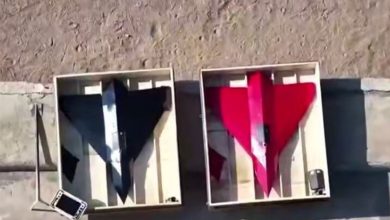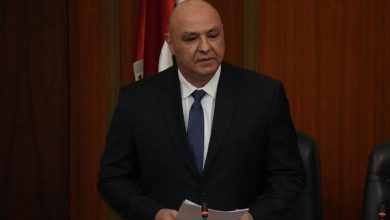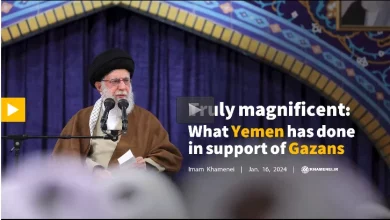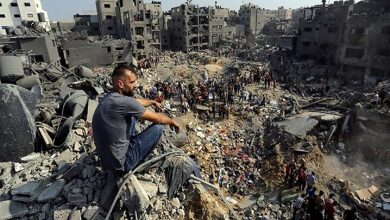Strategic dimensions of “Arbaeen Operation” against Israel
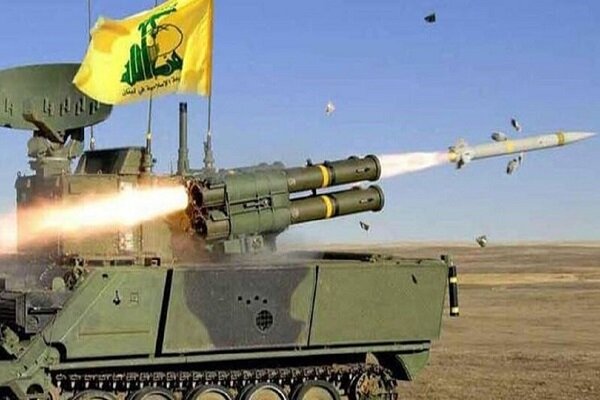
As the first move by Lebanese Hezbollah Resistance Movement to avenge Israeli assassination of one of its senior commanders ‘Fuad Shukr”, the “Arbaeen Operation” had several strategic messages for the criminal Israeli regime.
In the wee hours of Sunday (August 25), coinciding with Arbaeen Day, which marks the martyrdom anniversary of Imam Hussein (AS) and his true companions in Karbala, Hezbollah’s drone-missile units targeted military-security positions in the northern and central parts of the occupied territories with more than 300 Katyusha missiles and dozens of drones in the first stage of its response to the Israeli assassination of “Fuad Shukr” one of the top commanders of Hezbollah Resistance Movement.
In view of the military experts, such a large-scale operation by Hezbollah has been unprecedented since 33-day war. During these operations, in addition to barracks and military headquarters of the Zionist regime, the military bases affiliated with the Mossad, Shin Bet and 8200 artillery unit of the Zionist regime were also attacked by the Hezbollah Resistance Movement.
During these operations, a frigate belonging to the Israeli Navy was targeted which killed and injured six Zionists.
In addition, during this operation, a frigate belonging to the Israeli Navy was targeted, which killed and injured six Zionists.
Secretary-General of Hezbollah Resistance Movement Sayyed Hassan Nasrallah called this operation “Arbaeen Operation” and announced that the mission was accomplished successfully. Regarding the main goals of this operation, Nasrallah said that Hezbollah has specified rules such as not targeting civilians since the beginning of the war, and for this reason, only military targets were considered in this operation.
On the other hand, political leaders, military commanders and Hebrew media outlets created a fake narrative and published it in the media. The Zionists claim that just minutes before the start of Hezbollah’s attack on Lebanon, nearly 100 fighter jets of this regime targeted more than 40 centers in Lebanon within 20 minutes and caused the destruction of nearly 6,000 Hezbollah missiles.
According to the intelligence department of the Zionist regime, apparently, Ben Gurion Airport in the occupied territories had been at the target of attack by Hezbollah Resistance Movement.
Only hours after the victorious operation of the Lebanese Islamic Resistance Movement against the Zionist regime, Hezbollah Secretary General Sayyed Hassan Nasralla explained the various aspects of the first stage of the retaliatory response of the resistance.
At first, he considered the reason for the delay in the revenge operation to be the timing of the response to the assassination of “Fuad Shukr” and a kind of punishment for the Zionists.

Nasrallah described the Zionist regime’s attack on Dahiya region a few weeks ago as crossing a “red line” and declared that one of the main reasons for the delay in the process of revenge operation is to give time to negotiations to stop the aggression on the Gaza Strip.
Hezbollah chief Nasrallah announced targeting the Gillot spy base and military unit 8200 as one of the main targets of the Arbaeen Operation. He further added that Hezbollah’s missile attacks were a kind of offensive operation to realize the main goal of the resistance, which is to target the Mossad assassinations’ planning site in the north of Tel Aviv.
Elsewhere in his remarks, the secretary general of Hezbollah Resistance Movement further pointed to one of the important milestones of the Arbaeen Operation, which was the launch of a drone towards the occupied territories for the first time from the Beqaa Valley.
According to the Lebanese Shiite leader, the drones were fired without any obstacles from the common border between Lebanon and occupied Palestine towards the predetermined targets. Before this, the prevailing opinion was that the Beqaa valley has a limited possibility of hosting offensive equipment of the resistance, but this false assumption was invalidated in the recent operations of the Lebanese resistance.
Another important part of the speech of the secretary general of Hezbollah in Lebanon was his reference to the claim of the Zionist media regarding the preventive attack of the Israeli Air Force against the resistance launchers.
Referring to the vigilance of the resistance, Hezbollah chief announced that Hezbollah had already emptied all the southern valleys of Lebanon from missiles, and the claims of the Zionists regarding the targeting of ballistic missiles or rocket launchers of the resistance are not true.
Despite the full alertness of the Zionist enemy’s radar systems, satellite monitoring and espionage activities, the Lebanese Hezbollah Resistance Movement was able to successfully complete the first stage of the retaliatory operation against Israel.
The “Arbaeen Operation” showed that the security services of the Zionist regime not only cannot prevent resistance operations, but also they are easy targets for the Resistance’s missiles and drones.
During these attacks, Nafieh Zeif missile launch pad, Miron military base, Al-Zaourah base, Gililot base, Sahle base, Kila military headquarters, Yavf military headquarters, Nafah base, Yarden base, Ramot Naftali base and Ain Ze Tim base were successfully attacked by the Hezbollah Resistance Movement.

In the current situation, Lebanon’s Hezbollah has announced that the first stage of the retaliatory response to the assassination of “Fuad Shukr” is over, but if Netanyahu still intends to venture into southern Lebanon, he must be ready for a new round of resistance attacks in a larger scale and scope.
The fact is that Israel’s defense systems are not capable of effectively dealing with a large amount of resistance missiles and drones, and in any possible conflict, the initiative will be in the hands of the resistance movement.
MA/6207151
